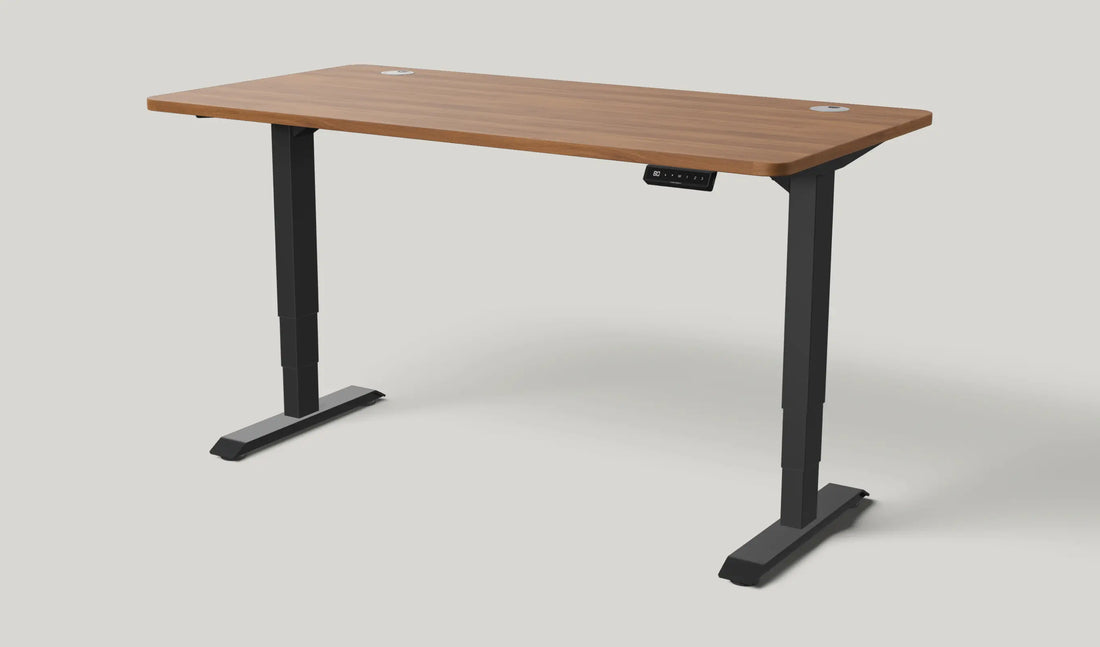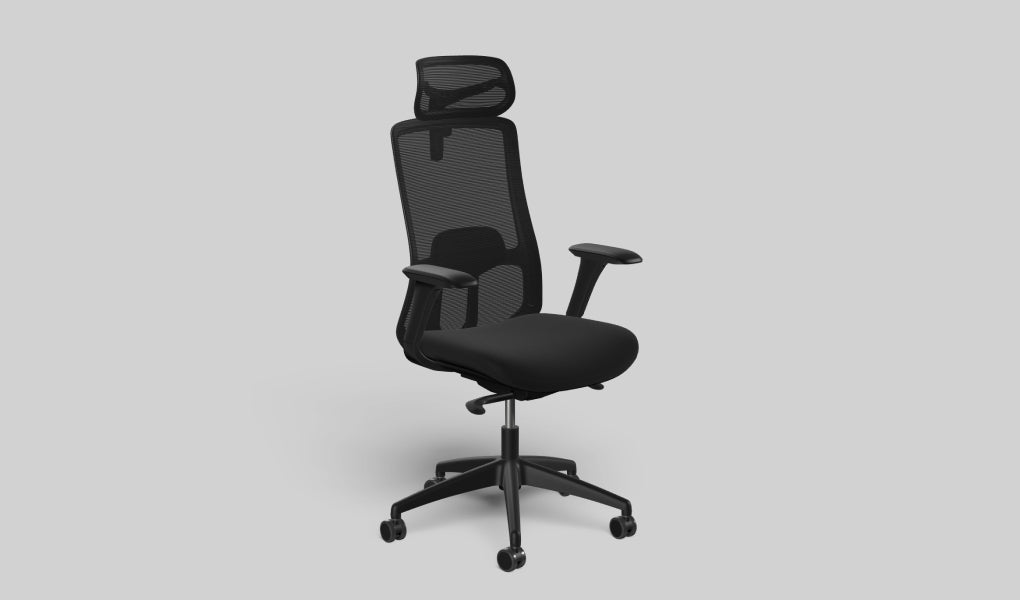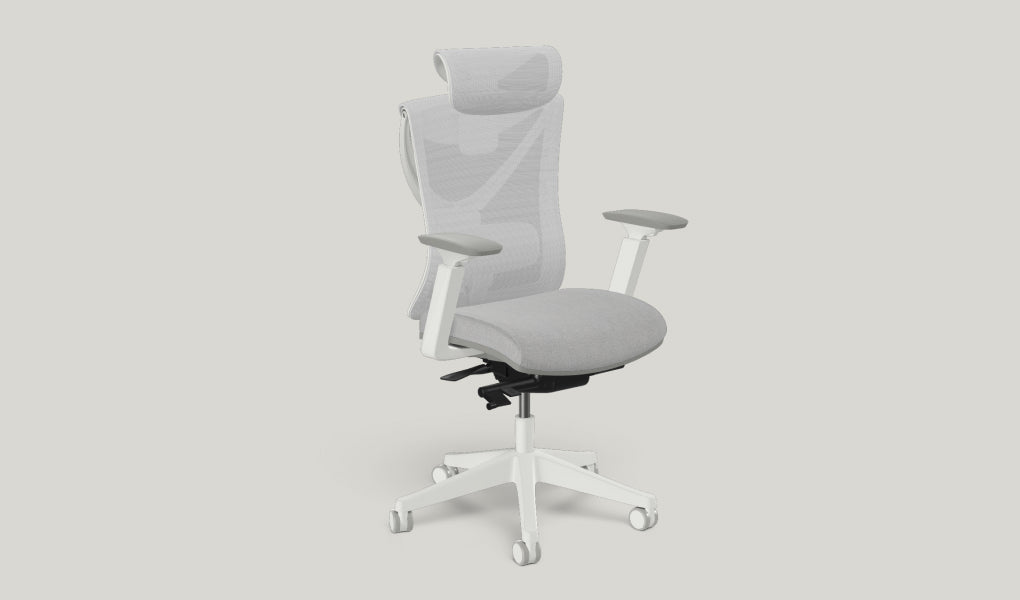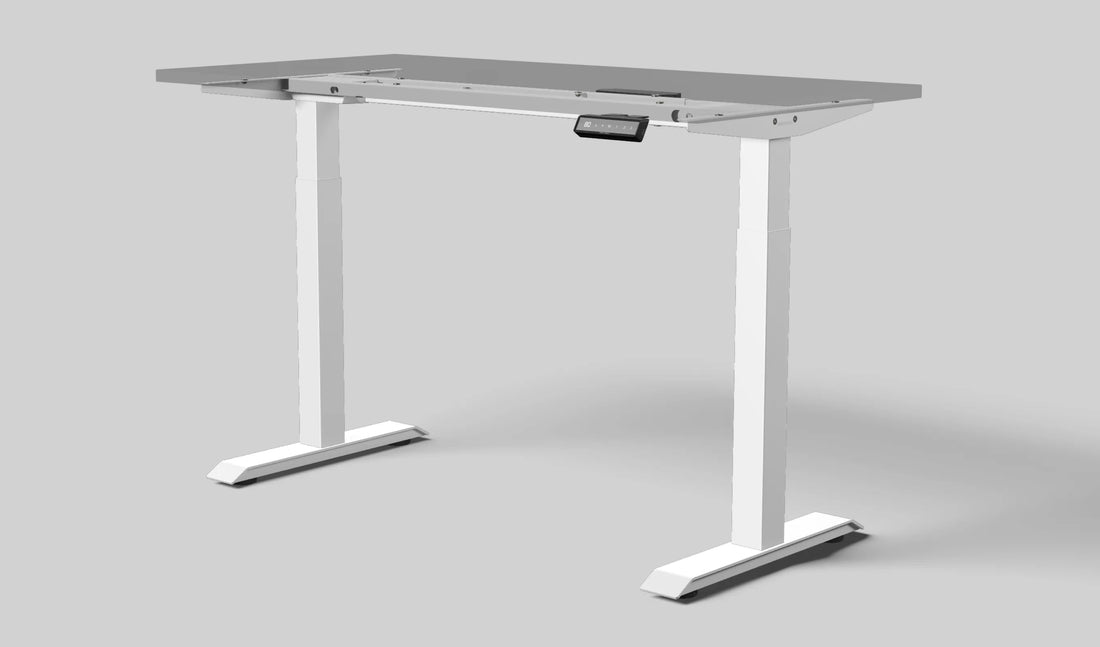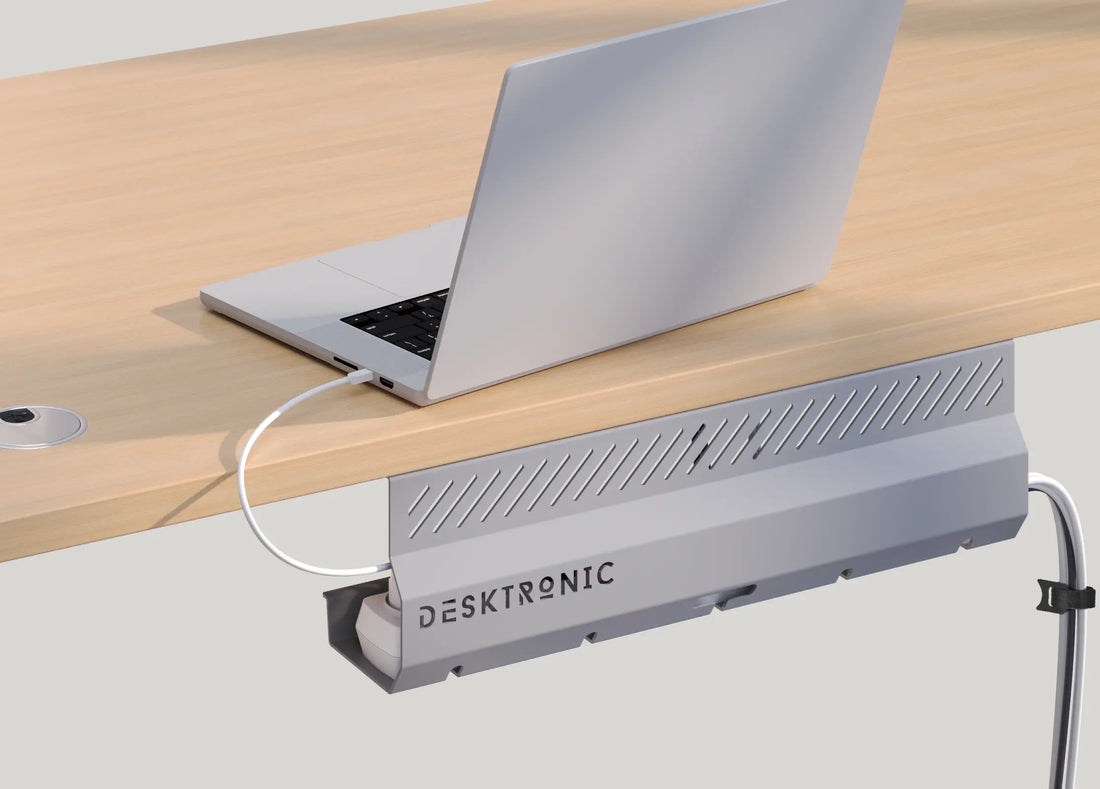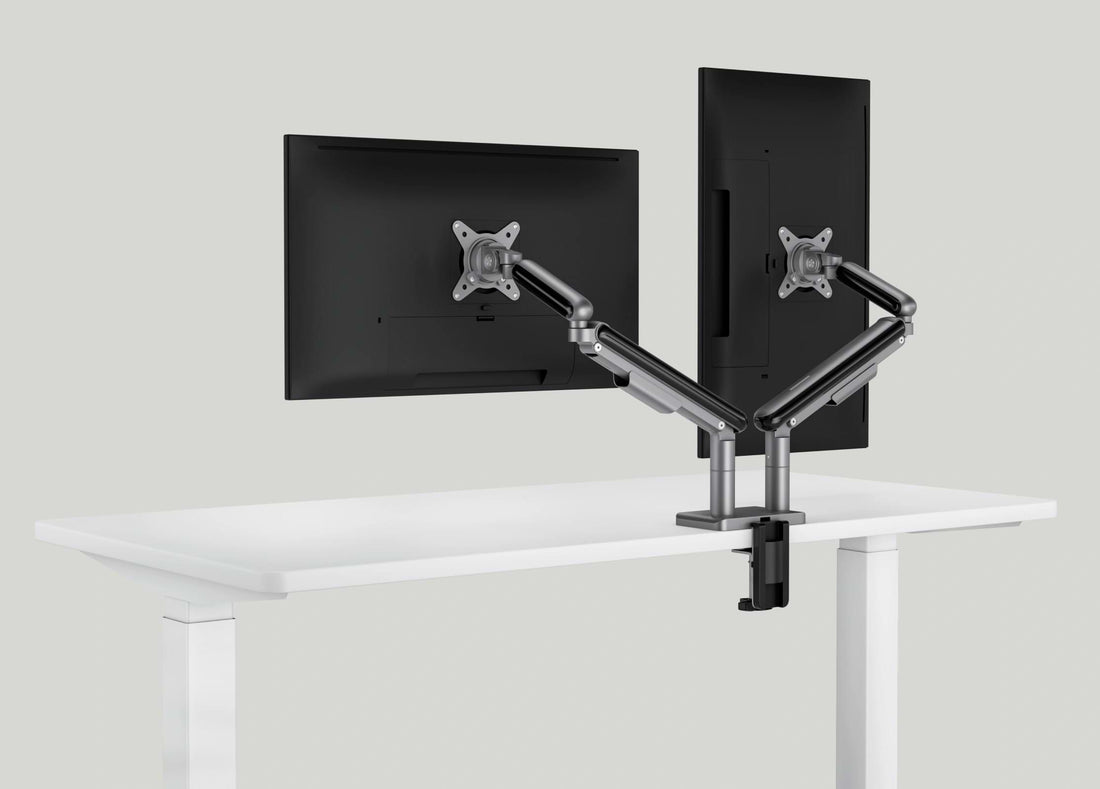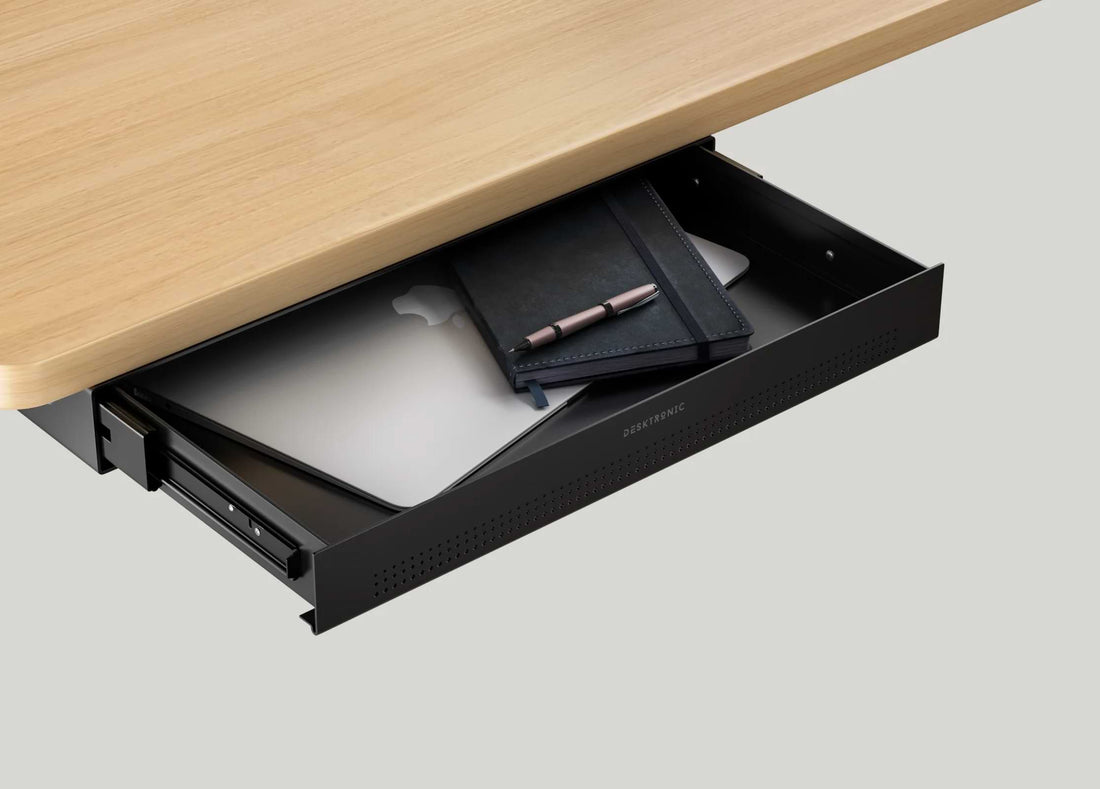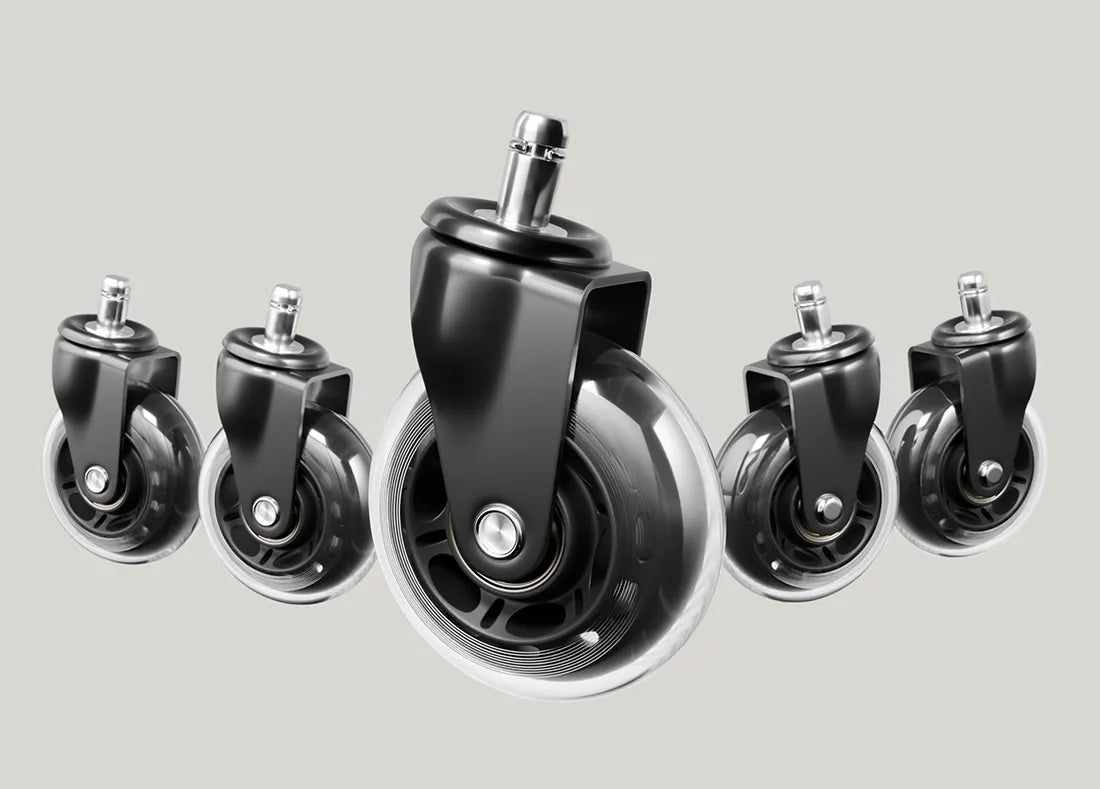Do you already have a standing desk but are still struggling?
Most likely, your desk is not set up correctly. Whether working from home or at the office, many people don’t realise the importance of standing desk height. To make the most of the amazing benefits of a height-adjustable desk, it’s crucial to achieve the optimal position. Keep reading to discover how you can revolutionise your desk setup.
How High Should a Standing Desk Be?
The correct height for a standing desk provides the most ergonomic position for your body, keeping you comfortable, happy, and productive throughout the working day. However, be aware that the required height for your standing desk can change regularly depending on multiple factors – even the height of the heels on your shoes. Research suggests that swapping from sitting down to standing up at regular intervals is most beneficial – especially if you’re just getting used to your new standing desk. It’d be optimal to stay standing for between 2-4 hours a day in half-hour intervals.
All these ups and downs are why it’s essential that you adjust the height of your desk quickly and easily. This allows you to adapt your standing desk height to each different situation without any stress or hassle.
But here’s the thing: changing the height of a standing desk manually can be a real pain. Most manual desks rely on winding systems that can be a struggle to use. Not only can they be fiddly to operate, but they also aren’t accurate, making it complicated to optimise the height of your desk.
Adjusting Desktronic standing desks, however, is a breeze. Our electronic system allows you to effortlessly take your height-adjustable desk from sitting to standing heights. Crafted from top-quality materials and with reinforced steel frames, our height-adjustable desks are powered by a dual motor system that takes them from super low to extra high at the touch of a button in double quick time, silently and smoothly.
How to Find the Perfect Height for Your Standing Desk
It can be tricky to determine the correct height for a standing desk. With this in mind, we’ve put together some easy-to-follow guidelines on customising your desk to work best for you.
First things first – there is no standard height for a standing desk. People come in all shapes and sizes, and there is no ‘one size fits all’ option. For example, someone 6 foot 4 inches (193 cm) tall will require a desk height of at least 47 inches (119 cm), whereas someone 5 feet (152 cm) tall only needs a height of around 36,5 inches (92 cm).
The governing factor when deciding the correct desk height for any given individual is their height and body proportions. Desk height calculators that generate a measurement based on your height are available online, but these can be unreliable. Why not take physical measurements and try things out for yourself instead? It’s a much easier way to find the ultimate fit.
You’ll need someone to help you with this so they can take measurements and help adjust your desk while you stay in the perfect position. It can be mastered in three easy steps:
Step 1
Make sure you’re standing straight with your arms by your sides and your feet flat on the floor. Stay relaxed, keeping your shoulders back and your head straight – looking straight ahead should help you with this. Next, measure the distance between your elbows and the floor and add an inch or two to your measurement. Bring the standing desk up to this height.
Step 2
While remaining positioned correctly in front of the desk, bend your elbows at 90 degrees and rest your arms on the desk surface. Bending your elbows at this angle allows the wrists to move freely and relieves pressure on the joints, reducing the risk of wrist strain, carpal tunnel syndrome, and other similar health issues.
You should now be able to comfortably rest your arms upon it without having to bend or twist your wrists to use your mouse and keyboard while holding good posture.
Be sure to test your new setup and make any necessary minor adjustments before proceeding to the final step.
Step 3
Eye strain and aching neck muscles are common complaints when working at a desk all day. To avoid this, your monitor must be positioned at the height and angle most comfortable for you. When standing with your desk at the correct height, you should be able to see your monitor clearly while keeping your spine aligned and your head straight. Monitors should be inclined at around 20 degrees, and your line of sight should be in line with the top third of the screen. Experts recommend that there should also be a distance of 18 to 20 inches (45-50 cm) between your eyes and the screen to reduce eye strain.
We recommend a monitor holder to optimise your monitor's positioning. Sturdy and easily adjustable to any precise height or angle, the stylish and durable design of the Desktronic monitor holder can support any size of monitor (or monitors) and also free up valuable workstation space.
Top Tips:
If you’re new to standing at your desk, take your time to get used to it. Start by swapping between sitting and standing every 20 minutes, and gradually build up your standing time.
Take regular small breaks. Stretch your leg muscles and take short walks occasionally to give your body (and mind) a break.
Get some comfy footwear. Style may be important, but it’s no substitute for your health and comfort. Investing in a pair of shoes that support your spine and feet correctly will maximise the benefits of working at your standing desk. Wearing the same footwear for work every day will also limit the height adjustments you must make.
Are you ready to change to a healthier, happier, and more productive workplace? Whether you work from home or share office space, our height-adjustable desks offer the ideal solution. Get in touch to see how our products can transform your life.


